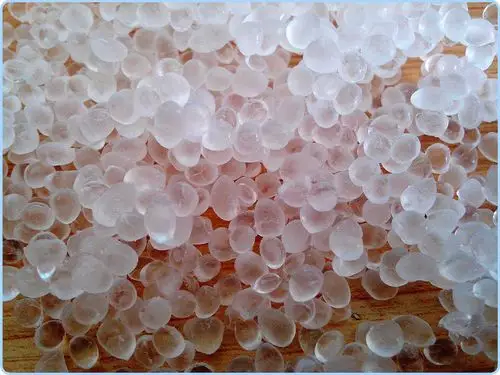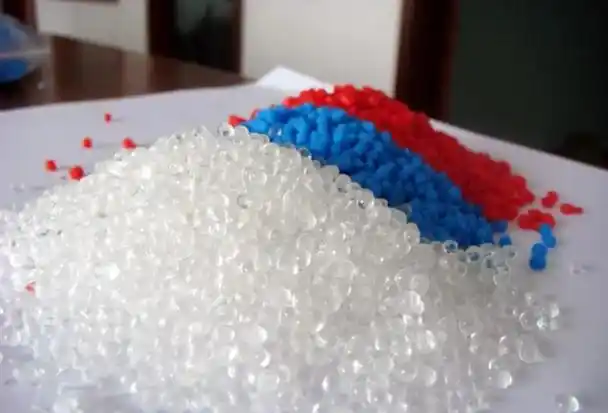As a veteran in the TPE (Thermoplastic Elastomer) extrusion and molding industry, I’ve spent years navigating the intricacies of material handling, from formulation to recycling. One question that pops up frequently, especially among those managing production costs, is whether it’s feasible to mix regrind material (also known as water mouth or sprue material) of different hardnesses in TPE processing. It’s a tempting idea—reusing scrap material saves money and reduces waste—but it’s not as simple as tossing everything into the hopper. In this article, I’ll share my experiences, practical insights, and technical know-how to explain what happens when you mix TPE regrind of varying hardnesses, the potential pitfalls, and how to make it work (or when to avoid it altogether).

Why Mixing Regrind Matters
Early in my career, I worked in a factory where cost-cutting was a constant priority. Regrind—those scraps left over from sprues, runners, or defective parts—was a goldmine for reducing material expenses. TPE, with its recyclability, seemed like the perfect candidate for reusing regrind. But when we started mixing regrind from different TPE grades (say, a 30 Shore A with a 70 Shore A), the results were… let’s just say, unpredictable. Sometimes the product was fine; other times, we ended up with inconsistent parts that failed quality checks. That experience taught me that mixing regrind of different hardnesses is a high-stakes decision that requires careful consideration.
The goal here is to help you understand the consequences of mixing TPE regrind, how it affects product quality, and what steps you can take to do it successfully—or decide when it’s better to keep things separate. Let’s break it down.
Understanding TPE and Regrind
Before diving into the effects of mixing, let’s clarify what we’re working with. TPEs are a family of materials that combine rubber-like elasticity with the processability of plastics. They come in various hardnesses, measured on the Shore A or Shore D scale (e.g., 20 Shore A for soft, flexible parts; 80 Shore A for stiffer ones). Common types include SEBS, TPU, TPO, and TPV, each with unique properties.
Regrind refers to recycled TPE material—scraps from the extrusion or injection molding process that are ground up for reuse. In an ideal world, you’d regrind material from the same batch, with identical hardness and composition. But in reality, factories often deal with regrind from multiple TPE grades, especially in facilities producing a range of products with different hardness requirements. Mixing these regrinds can lead to a host of outcomes, some manageable, others problematic.

What Happens When You Mix TPE Regrind of Different Hardnesses?
From my years on the production floor, I’ve seen the effects of mixing regrind firsthand. Here’s a detailed look at what happens:
1. Impact on Material Properties
When you mix TPE regrind of different hardnesses, you’re essentially creating a blended material with properties that fall somewhere between the softest and hardest components. For example, combining a 30 Shore A TPE (soft and flexible) with a 70 Shore A TPE (stiffer) might result in a material with an intermediate hardness, say 50 Shore A. Sounds straightforward, but the reality is messier:
Inconsistent Hardness: The blend doesn’t always average out neatly. Variations in mixing ratios or incomplete blending in the extruder can lead to parts with uneven hardness. I’ve seen extruded profiles where one section felt softer than another, causing issues in applications requiring uniform flexibility.
Mechanical Properties: Mixing affects tensile strength, elongation, and tear resistance. In one project, we mixed regrind from a soft SEBS (40 Shore A) with a harder TPU (80 Shore A). The resulting parts had reduced tear strength, which was a dealbreaker for a seal application.
Surface Finish: Hardness differences can alter surface aesthetics. Softer TPEs tend to have a matte, tacky feel, while harder ones are glossier. Mixing them can create an uneven surface—sometimes matte, sometimes glossy—making the product look inconsistent.
2. Processing Challenges
The extrusion or molding process doesn’t take kindly to mixed regrind either. Here’s what I’ve encountered:
Melt Flow Issues: Different hardnesses often mean different melt flow indices (MFI). A soft TPE typically has a lower MFI (slower flow), while a harder one flows more easily. Mixing them can cause uneven flow in the extruder, leading to defects like die swell, surface ripples, or incomplete mold filling.
Temperature Sensitivity: TPEs of different hardnesses require different processing temperatures. A soft TPE might need 160-180°C, while a harder one processes better at 200-220°C. Mixing them forces you to pick a compromise temperature, which can degrade one material (causing burning or chain scission) or underprocess another (leading to poor fusion).
Equipment Wear: Inconsistent material blends can increase wear on screws and dies. I’ve seen extruders struggle with mixed regrind, especially when fillers in one TPE grade (common in harder TPEs) abrade the equipment.
3. Quality and Consistency Risks
The biggest headache with mixing regrind is inconsistency. Customers expect uniform products, and mixed regrind can jeopardize that:
Batch-to-Batch Variation: If your regrind mix isn’t precisely controlled, each batch can have slightly different properties. I once worked on a tubing project where mixed regrind caused hardness variations of ±10 Shore A, leading to rejected lots.
Aesthetic Defects: Mixed regrind can cause visual imperfections like streaks, color variations (if pigments differ), or surface irregularities. This is especially problematic for consumer-facing products like grips or handles.
Performance Failures: For critical applications (e.g., medical tubing or automotive seals), mixed regrind can compromise performance. In one case, a client’s mixed regrind led to seals that failed under pressure because the blend weakened the material’s elasticity.
4. Regulatory and Safety Concerns
In industries like medical or food-contact applications, mixing regrind raises red flags. Regulatory bodies (like the FDA or EU food safety agencies) often require consistent material formulations. Mixing regrind of different hardnesses can introduce unknowns, especially if the original materials had different additives or certifications. I’ve advised clients to avoid mixed regrind entirely for medical-grade TPEs to stay compliant.
Can You Make Mixed Regrind Work? Practical Strategies
While mixing TPE regrind of different hardnesses comes with risks, it’s not impossible to do successfully. Here are the strategies I’ve developed over the years:
Test and Characterize the Blend: Before full production, run a small batch with the mixed regrind and test its properties (hardness, tensile strength, elongation). Use a Shore durometer and tensile tester to confirm the blend meets your specs. In one factory, we created a “blend recipe” (e.g., 70% 40 Shore A + 30% 70 Shore A) and tested it extensively to ensure consistency.
Control Mixing Ratios: Precision is everything. Use a gravimetric feeder to control the ratio of soft to hard regrind. I’ve found that keeping the mix below 20-30% regrind (relative to virgin material) minimizes variability.

Homogenize the Blend: Ensure thorough mixing in the extruder or compounding stage. A twin-screw extruder is ideal for blending regrind, as it provides better shear and dispersion than a single-screw setup.
Adjust Processing Parameters: Fine-tune your extruder settings (temperature, screw speed, cooling rate) to accommodate the blended material. For example, I’ve used a slightly higher barrel temperature (e.g., 190°C) to ensure good fusion of mixed TPEs.
Limit Use to Non-Critical Applications: Reserve mixed regrind for less demanding products, like non-load-bearing profiles or decorative parts. For critical applications, stick to virgin material or single-hardness regrind.
Here’s a quick reference table summarizing the effects and solutions:
|
Issue |
Effect on Product |
Solution |
Notes |
|---|---|---|---|
|
Inconsistent Hardness |
Uneven flexibility or stiffness |
Test blends; control mixing ratios |
Aim for <30% regrind in blend |
|
Melt Flow Issues |
Surface defects, poor mold filling |
Use twin-screw extruder; adjust MFI |
Check MFI of each regrind type |
|
Aesthetic Defects |
Streaks, uneven surface |
Homogenize blend; match pigments |
Avoid mixing colored regrinds |
|
Regulatory Concerns |
Non-compliance in medical/food applications |
Use virgin or single-hardness regrind |
Verify certifications |
When to Avoid Mixing Regrind
Sometimes, the risks outweigh the benefits. Based on my experience, here are scenarios where you should avoid mixing TPE regrind of different hardnesses:
Critical Applications: Medical, automotive, or food-contact parts where consistency and traceability are non-negotiable.
High-Performance Requirements: If the product needs precise mechanical properties (e.g., specific tensile strength or elasticity), mixed regrind is too unpredictable.
Visible Parts: For consumer products where aesthetics are critical, mixed regrind can cause visual defects that hurt marketability.
Large Hardness Gaps: Mixing a 20 Shore A with an 80 Shore A is riskier than mixing a 40 Shore A with a 50 Shore A. The greater the difference, the harder it is to achieve uniformity.
Real-World Example: A Lesson in Mixed Regrind
A few years back, I consulted for a manufacturer producing TPE grips for sports equipment. They wanted to cut costs by mixing regrind from a soft 35 Shore A TPE (used for grips) with a harder 65 Shore A TPE (from another product line). The initial trials were a disaster—grips came out with inconsistent textures, and some were too stiff for users. We eventually settled on a 20% regrind mix (80% virgin, 15% soft regrind, 5% hard regrind), processed through a twin-screw extruder with a customized temperature profile. The result was a consistent 40 Shore A grip that passed quality checks. The lesson? Mixing is possible, but it requires rigorous testing and tight control.

Cost vs. Quality: The Trade-Off
Reusing regrind is a no-brainer for cost savings—virgin TPE can cost $2-5 per kg, while regrind is essentially “free” (minus grinding and processing costs). But cutting corners can backfire. I’ve seen factories lose more money on rejected parts or unhappy customers than they saved by mixing regrind. My rule of thumb: If the product’s performance or appearance is critical, limit regrind to 10-20% and stick to similar hardnesses. For low-stakes applications, you can push the regrind ratio higher, but always test first.
Environmental and Equipment Considerations
Beyond material and processing, your setup matters:
Grinder Maintenance: Ensure your grinder produces uniform regrind particles. Large chunks or dust can cause feeding issues and inconsistent blends.
Cleanliness: Contaminants (like dirt or other polymers) in regrind can ruin the batch. I’ve seen a single piece of rogue PP in a TPE regrind batch cause streaks that halted production.
Storage: Store regrind in sealed containers to avoid moisture absorption, which can degrade TPE during processing.

Wrapping It Up
Mixing TPE regrind of different hardnesses is a double-edged sword. It can save costs and reduce waste, but it introduces risks like inconsistent properties, processing challenges, and quality issues. My advice? Approach it with caution, test extensively, and keep the mix ratio low for critical applications. Over the years, I’ve learned that a little upfront effort—characterizing the blend, optimizing the process, and setting clear quality standards—can make all the difference. If you’re unsure where to start, reach out to your material supplier for guidance or run a pilot batch to dial in the process.
Got a specific regrind mixing issue on your hands? Share it below, and I’ll do my best to offer tailored advice based on my experience. Let’s keep those production lines running smoothly!
Related Questions and Answers
Q: Can I mix TPE regrind from different manufacturers?
A: It’s risky. Different manufacturers use proprietary formulations, which can lead to incompatible blends. Stick to regrind from the same supplier and test thoroughly if you must mix.
Q: How much regrind is safe to use in TPE processing?
A: For non-critical parts, 20-30% regrind is usually safe. For critical applications, keep it below 10% and use single-hardness regrind to minimize variability.
Q: Does mixing regrind affect TPE recyclability?
A: Yes, it can. Repeated recycling degrades TPE’s molecular structure, and mixing hardnesses complicates things further. Limit regrind cycles to 2-3 for best results.
Q: What tests should I run on mixed regrind parts?
A: Measure hardness (Shore A/D), tensile strength, elongation, and tear resistance. Visually inspect for surface defects and use a gloss meter if aesthetics matter.





